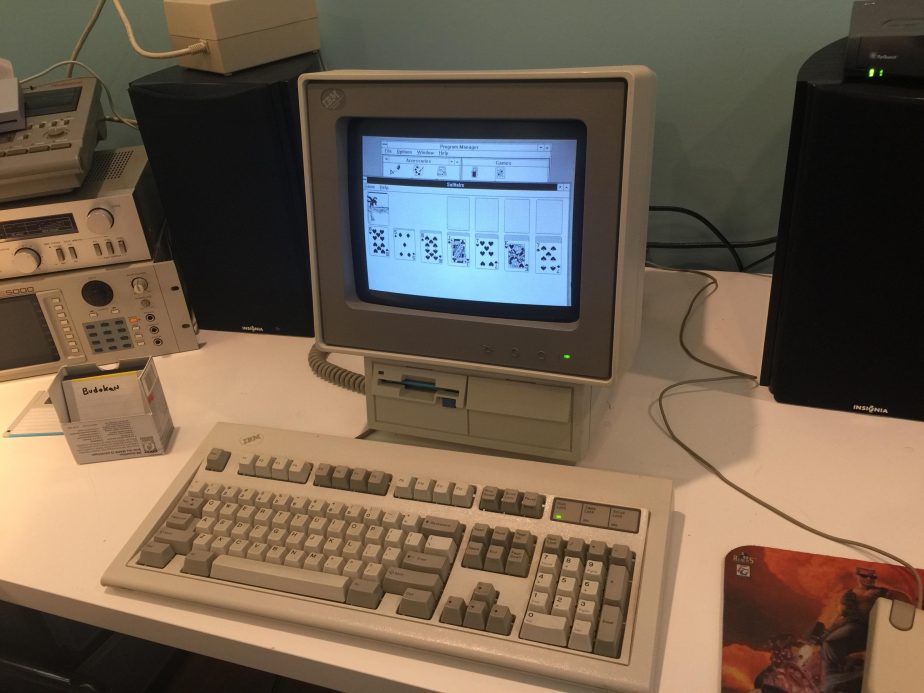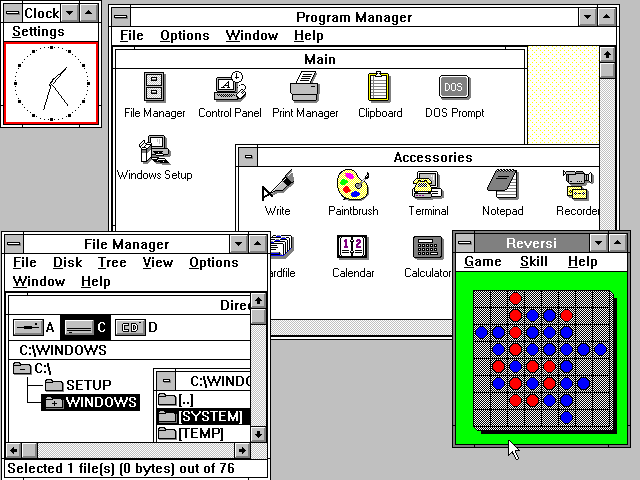
When we think of the early 1990s, it’s impossible to ignore the massive impact that Windows 3.0, released by Microsoft in May 1990, had on personal computing. For many, this was their first real taste of a graphical user interface (GUI), and it marked the beginning of Microsoft’s dominance in the desktop operating system market. Windows 3.0 wasn’t just an upgrade from its predecessors; it was a game-changer that set the stage for modern computing.
1. A Major Leap in the Windows Series
Prior to Windows 3.0, Microsoft had already released two versions of its GUI-based operating system, Windows 1.0 in 1985 and Windows 2.0 in 1987. While these earlier versions introduced the concept of windows, icons, and mouse navigation, they were far from mainstream hits. Limited hardware capabilities and clunky user interfaces made them cumbersome for many users.
Windows 3.0 changed that. It came at a time when PCs were becoming more powerful, with Intel’s 386 processor giving the OS the extra horsepower it needed to run smoothly. This version could make use of enhanced memory management, allowing applications to multitask far more efficiently. It was the first version of Windows that was considered truly usable in a business environment, largely due to its ability to run MS-DOS applications in separate windows, greatly improving multitasking capabilities.

2. A Revolutionary User Interface
Perhaps the most significant change with Windows 3.0 was the overhaul of the user interface. The introduction of a Program Manager and File Manager provided users with a central hub to launch applications and manage files, something that would become foundational to future versions of Windows.
Additionally, icons were now more detailed and colorful, thanks to improved graphical capabilities. This made navigation and usage more intuitive for new users, many of whom were unfamiliar with command-line operating systems like MS-DOS.
Windows 3.0 also introduced standardized menus across applications, meaning users could expect the same “File, Edit, View” options regardless of the program, which was a huge step forward for usability.
3. Enhanced Application Support
Another factor that contributed to Windows 3.0’s success was its strong support for both old and new applications. It could run legacy MS-DOS applications, but it also took advantage of Windows-specific software designed to be more intuitive and visually appealing.
This was the era where we saw the birth of programs like Microsoft Word for Windows and Excel for Windows. These programs utilized Windows 3.0’s advanced memory management and graphical user interface to deliver a far superior experience compared to their DOS counterparts. It wasn’t just Microsoft software benefiting from this either; third-party developers began to flock to Windows, creating a thriving software ecosystem.
4. Expanding to Home Users
While earlier versions of Windows were aimed primarily at business users, Windows 3.0 started making its way into homes. The inclusion of simple, engaging programs like Solitaire and Minesweeper not only provided users with entertainment but also taught them how to use the mouse and familiarize themselves with window-based navigation. These games became iconic, bridging the gap between work and play, while subtly promoting Windows as an operating system for everyone, not just professionals.
5. A Commercial Success
The numbers tell the story of Windows 3.0’s success. By 1991, Microsoft had sold 4 million copies, a huge figure for that era. Windows 3.0 became a crucial source of revenue and solidified Microsoft’s place as a major player in the tech industry. Its success set the stage for the launch of Windows 3.1, which only expanded on the achievements of its predecessor, helping to cement the Windows brand as synonymous with personal computing.
6. Legacy of Windows 3.0
Looking back, Windows 3.0 was the foundation upon which Microsoft built its future. It laid the groundwork for modern versions of the operating system, introducing features like multitasking, graphical file management, and a standard user interface that would persist and evolve through Windows 95, XP, and beyond.
It wasn’t just a technical achievement—it was a cultural one. Windows 3.0 brought the personal computer out of the hands of hobbyists and office workers and into the homes of millions of users worldwide. It made computing accessible, intuitive, and even fun.









